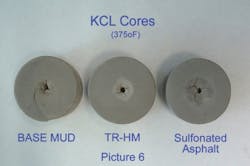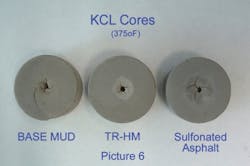VESSELS, RIGS, & SURFACE SYSTEMS
Bruce Beaubouef • Houston
BP launches vessels of opportunity program
BP has launched the Vessels of Opportunity (VOO) program as part of its response to theDeepwater Horizon oil spill. The program is designed to provide local boat operators with an opportunity to assist with response activities, including transporting supplies, assisting wildlife rescue, and deploying containment and sorbent boom.
To qualify for the program, boat operators and crew must meet several key requirements, including completing four hours of training, passing a US Coast Guard dockside examination, and meeting crewing requirements based on vessel size. Vessels also must be certified as safe, which may include inspection prior to activation.
Only vessel captains and employees that have completed training and meet the requirements are eligible to work in the BP Vessels of Opportunity program. The vessel owner does not need to be the operator or part of the crew.
Once qualified and selected for use, vessel operators and crew will be compensated for their assistance. BP notes that qualification alone, however, does not guarantee participation.
Once a vessel is selected, the owner, captain, and crew will be paid at pre-agreed rates based on the vessel length. In addition to a daily base amount, each will be eligible for additional compensation based upon the vessel’s scheduling.
BP says it has received a large volume of interest in VOO program, and that it is developing a strong core inventory of vessels. To date, over 3,000 vessels have been activated for duty through the program across four states – Louisiana, Alabama, Mississippi, and Florida.
BP turns to A Whale to speed recovery
BP has turned to the world’s largest oil skimmer, A Whale, to help accelerate its deepwater oil spill clean-up. As of press time, around 45,000 people, 6,500 vessels, and 120 aircraft had been pressed into service to help with the recovery.
Reports note that it is unlikely that the leaking oil well can be contained with confidence before sometime in August, when recovery crews are expected to complete two relief wells. So, BP is forging ahead with efforts to capture or burn the leaking oil in the meantime. These include efforts to capture the oil through a floating riser and place it on the containment vesselHelix Producer. This step could double the amount of oil being collected to up to 53,000 b/d.
Coast GuardCutter Resolute steams alongside A Whale, a tanker converted into an oil skimmer. Both vessels were working near the Deepwater Horizon spill site as part of the largest oil spill response in history. US Coast Guard photo by Petty Officer 1st Class John Masson.
However, until the relief wells are ready, some say BP’s best bet isA Whale, a super tanker that has joined in the oil disaster response. The largest oil skimmer in the world, A Whale operates by collected oil-polluted water. After separating the oil from the water, it releases the water back into the sea. The vessel reportedly can process 21 million gallons (or 500,000 bbl) of polluted water a day.
The super tanker has been tested in an area north of theDeepwater Horizon spill site. However, Taiwan company TMT Shipping Offshore, the vessel’s owner, said that results from an initial 48-hour testing period were inconclusive because of bad weather. TMT said it will make technical adjustments to the vessel to improve its skimming efficiency.
Kleven Maritime books PSV contracts
Norway’s Kleven Maritime has won platform supply vessel contracts from Eidesvik Offshore and from Meling Supply AS.
The Eidesvik order covers the delivery of an advanced PSV of VS 489 LNG design for delivery in 1Q 2012, with an option for a second vessel for 4Q 2012.
The order for Meling is for one multifunctional PSV of the VS 485 design for delivery Feb. 28, 2011. This is the third VS 485 contract won by Kleven Maritime within a month.
The Eidesvik vessels will be outfitted at Kleven Verft in Ulsteinvik. They represent a new generation of environmentally friendly platform service vessels with great emphasis on fuel economy, low emissions, and large capacities both below and on deck. Light ice class (ICE C) will make them suitable for northern waters. Sophisticated equipment for oil recovery (OIL REC NOFO 2009) and capacity for standby vessel are expected to further increase their market value.
Deadweight is 6,500 tons (5,897 metric tons), length 90 m (295 ft), beam 21 m (69 ft), with deck space of more than 1,050 sq m (11,302 sq ft). Four LNG dual fuel engines ensure low NOX emissions (85% reduction) and significantly reduce CO2 emissions (25% reduction). A new state-of-the-art system for purifying ballast water also will be installed, a requirement for vessels of this kind. The contract value is NOK 440 million ($69 million) for the first vessel.
The VS 485 for Meling Supply AS will be outfitted at Kleven Maritime’s Myklebust shipyard in Gursken, Norway. This also will be a new-generation PSV with a design emphasis on low emissions, fuel economy, and optimized cargo capacity both above and below deck. Ice class ICE C will make the vessel suitable for operations in the north, and oil recovery equipment (OIL REC) is expected to add further value.
Deadweight will be around 4,500 tons (4,082 metric tons), overall length 88 m (288 ft), beam 20 m (66 ft), with a deck space of about 1,000 sq m (10,763 sq ft). The vessel has accommodations and certification for 64 persons, and the hull will be prepared for the installation of a crane and helicopter deck. The contract value is approximately NOK 375 million ($59 million).
Topaz expands supply vessel fleet
Topaz Energy and Marine has added an 84-m (275-ft) long multipurpose support vessel (MPSV) to its fleet servicing the offshore oil and gas industry.
TheTopaz Commander already has transferred to Vietnam under a contract with ADAMS Offshore Services.
Topaz expects to take delivery of over 10 further new vessels this year, including four anchor handling tug supply vessels custom-built for the Saudi Arabian market.
The company says its younger vessels provide modern, high-spec tonnage and facilities; and better suit safety and efficiency standards required by oil and gas producers and operators. The newer vessels will replace older tonnage in the fleet to bring down its average age profile.
Offshore Articles Archives
View Oil and Gas Articles on PennEnergy.com

